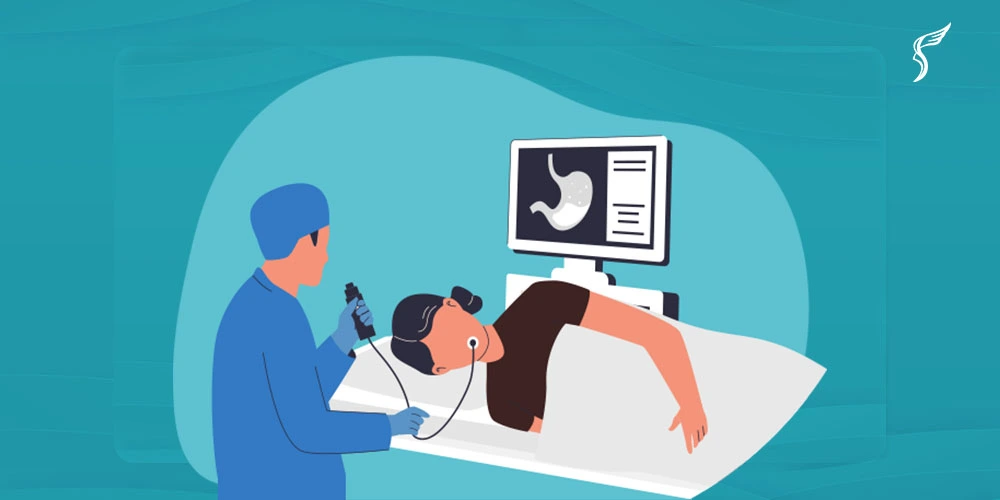A gastroscopy, also known as an upper endoscopy, is a common diagnostic procedure used to examine the esophagus, stomach, and the upper part of the small intestine. It helps doctors detect conditions such as ulcers, inflammation, bleeding, or even early signs of cancer.
Like other types of endoscopy, it involves inserting a thin, flexible scope into the body—this time through the mouth. Because of this, it is natural for patients to feel a bit nervous beforehand. The good news is that the procedure is usually easier and more tolerable than most expect, especially with sedation and proper care from the medical team.
A key factor in ensuring both the safety and accuracy of a gastroscopy is proper preparation. Following fasting instructions, reviewing the procedure with your doctor and understanding what to expect on the day of the procedure all help make the process smoother, safer, and more comfortable.
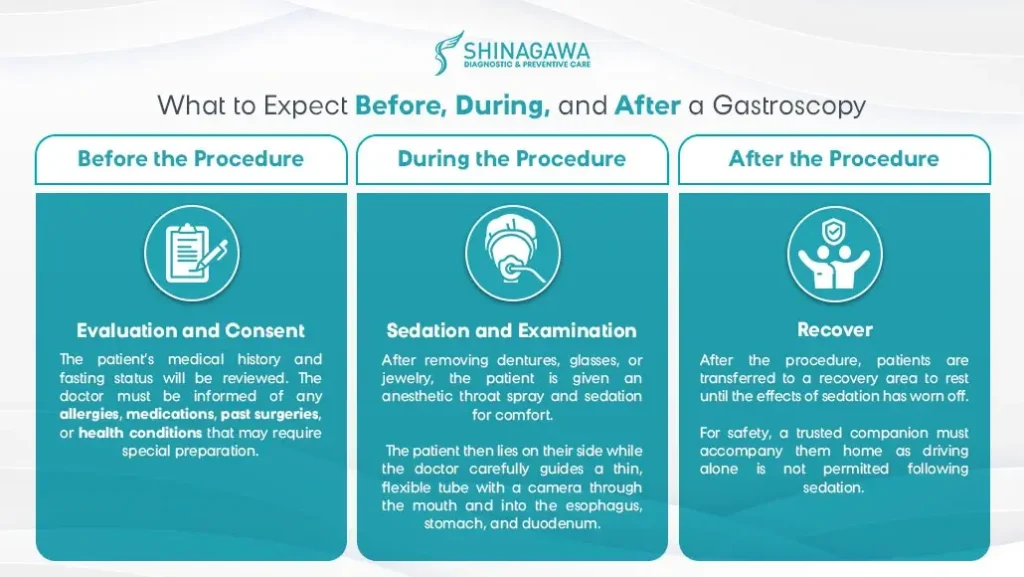
Why Proper Preparation Matters
Preparation is more than just following rules, as it directly affects both safety and results. Patients are usually advised to fast for 6 to 8 hours before the procedure to make sure that the stomach is empty. This helps prevent complications and gives doctors a clearer view of the digestive system..
If food or liquid remains in the stomach, there is a risk of aspiration, a complication that occurs when stomach contents enter the lungs during sedation.
Proper preparation also improves visibility inside the stomach, reducing the chances of missed findings and ensuring more accurate results.
Day of the Procedure
On the day of a gastroscopy, patients first check in at the clinic and go through several important steps to ensure their safety and comfort.
Medical Evaluation Before the Procedure
Your medical history and fasting status will be reviewed to identify any potential risks. Be sure to inform your doctor of any food or medication allergies, as well as any comorbidities such as diabetes, hypertension, or heart disease that may need special preparation. Mention any previous stomach or esophagus surgeries, as they may affect how the test is performed. It is also important to provide a complete list of current medications, including prescription drugs, over-the-counter medicines, and supplements.
Preparation and Sedation
Before the procedure begins, patients are asked to remove dentures, glasses, or jewelry. A local anesthetic spray is applied to the throat to reduce gagging, and sedation is usually administered through an IV line to help the patient relax and remain comfortable.
During the Procedure
The patient lies on their side while the doctor gently guides a thin, flexible tube with a camera through the mouth and into the esophagus, stomach, and duodenum. This allows for a detailed examination of these areas and, if necessary, the collection of tissue samples or minor interventions. The procedure usually takes 15 to 30 minutes.
Recovery and Results
Afterward, patients are brought to a recovery area until the effects of sedation wear off. It is normal to feel groggy or to experience a mild sore throat, which typically improves within a day. A trusted companion must accompany the patient home, as driving or operating machinery is not allowed after sedation.
Experience Japanese-standard Gastroscopy at Shinagawa Diagnostic
In many countries such as Japan, endoscopies are considered a normal part of routine health checkups, highlighting the importance of early detection and prevention of related conditions.
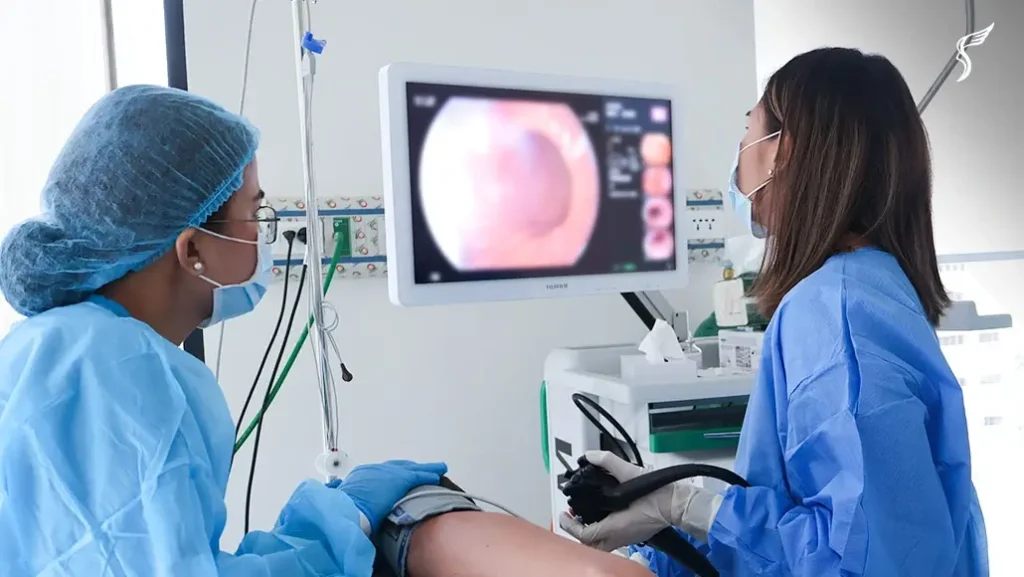
At Shinagawa Diagnostic & Preventive Care, we uphold this same principle, encouraging Filipinos to prioritize preventive healthcare. Through comprehensive packages like the VIP Shinagawa Dock, patients undergo a series of tests and screenings—including gastroscopy—that cover multiple aspects of their health.
In line with our commitment to Japanese-standard healthcare, our medical team is extensively trained in performing gastroscopies under the guidance of renowned Japanese medical experts. To further enhance the patient experience, our recovery area and attentive staff also ensure comfort, safety, and personalized care throughout the visit.
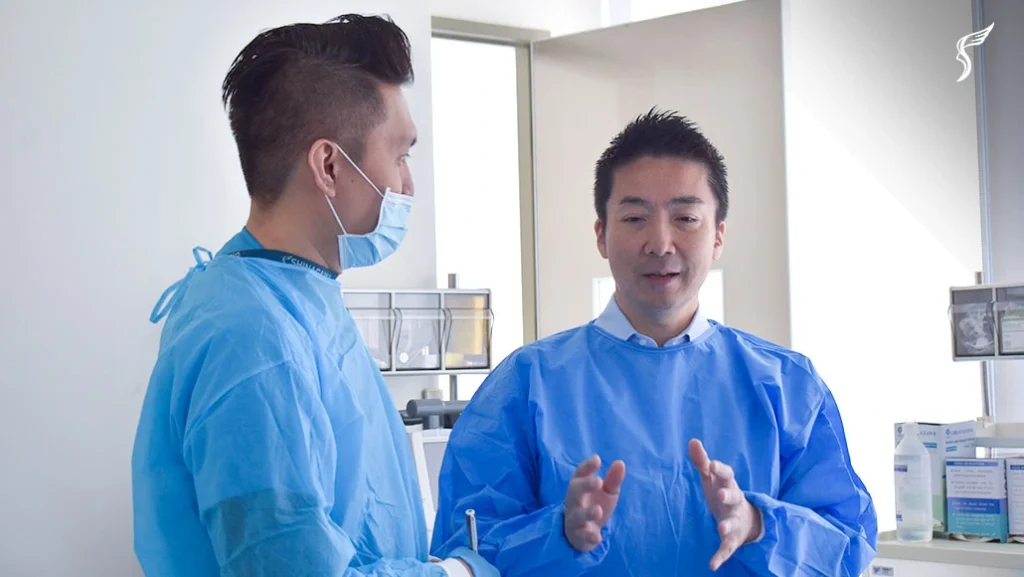
Citations and Resources
Shinagawa Diagnostic & Preventive Care is committed to delivering accurate, reliable, and up-to-date health information. All content published on our platform is grounded in evidence-based research and reviewed by qualified professionals where applicable.
To support our articles, we reference authoritative sources such as peer-reviewed medical journals, official health organizations (e.g., World Health Organization, Department of Health Philippines), and expert guidelines. Where appropriate, we also include data from trusted research institutions and clinical studies.
Our goal is to provide well-researched content that empowers you to make informed choices about your health, diagnostics, and preventive care.
Resources Used in This Article
- NHS. “Getting ready Gastroscopy, https://www.nhs.uk/tests-and-treatments/gastroscopy/getting-ready/“
- PubMed. “Comfort, safety and quality of upper gastrointestinal endoscopy after 2 hours fasting: a randomized controlled trial, https://pmc.ncbi.nlm.nih.gov/articles/PMC4225862/“
- Philippine Society for Digestive Endoscopy. “Gastroscopy, https://psde.org.ph/procedures/“
Book an appointment now

Inquire
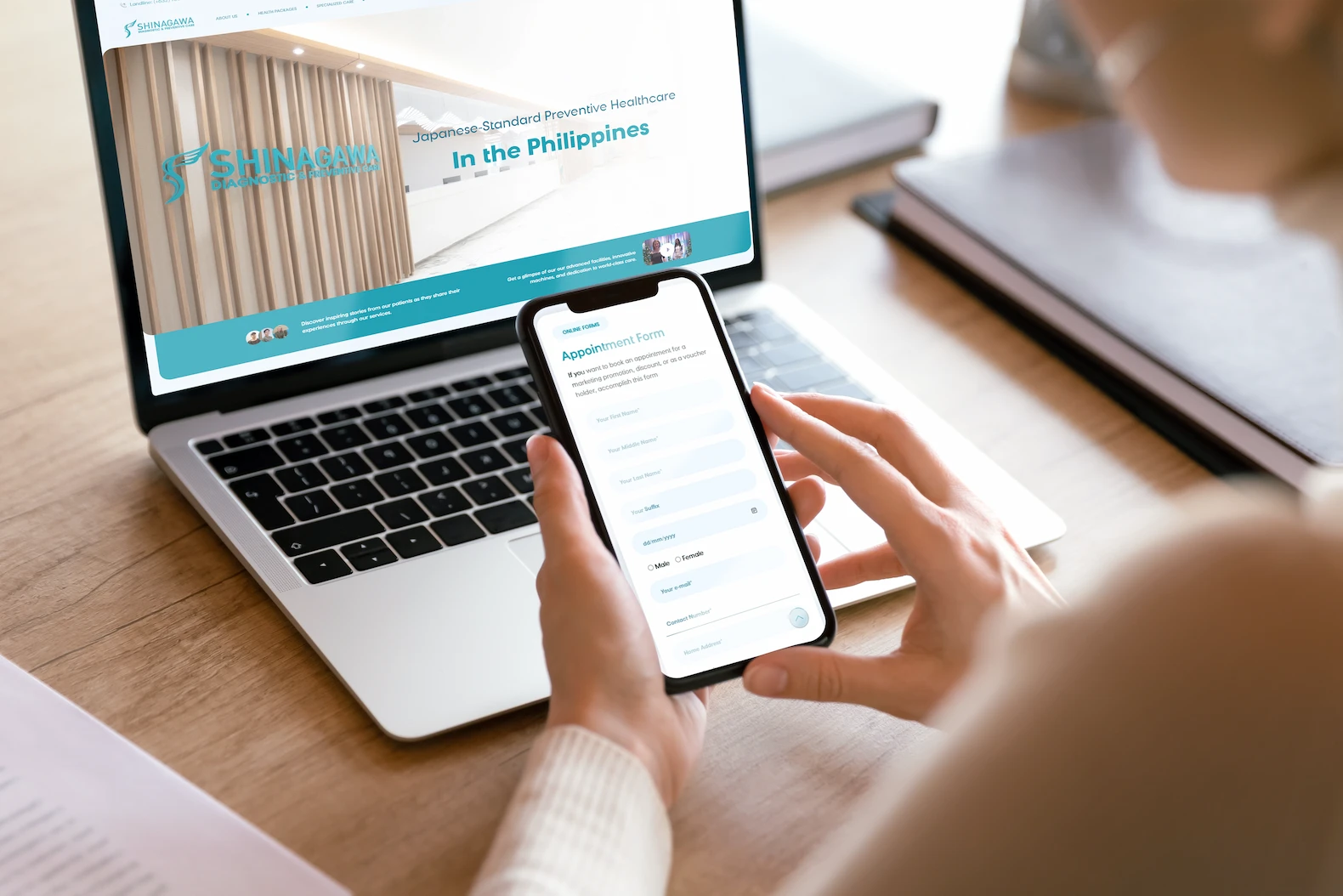
Book


